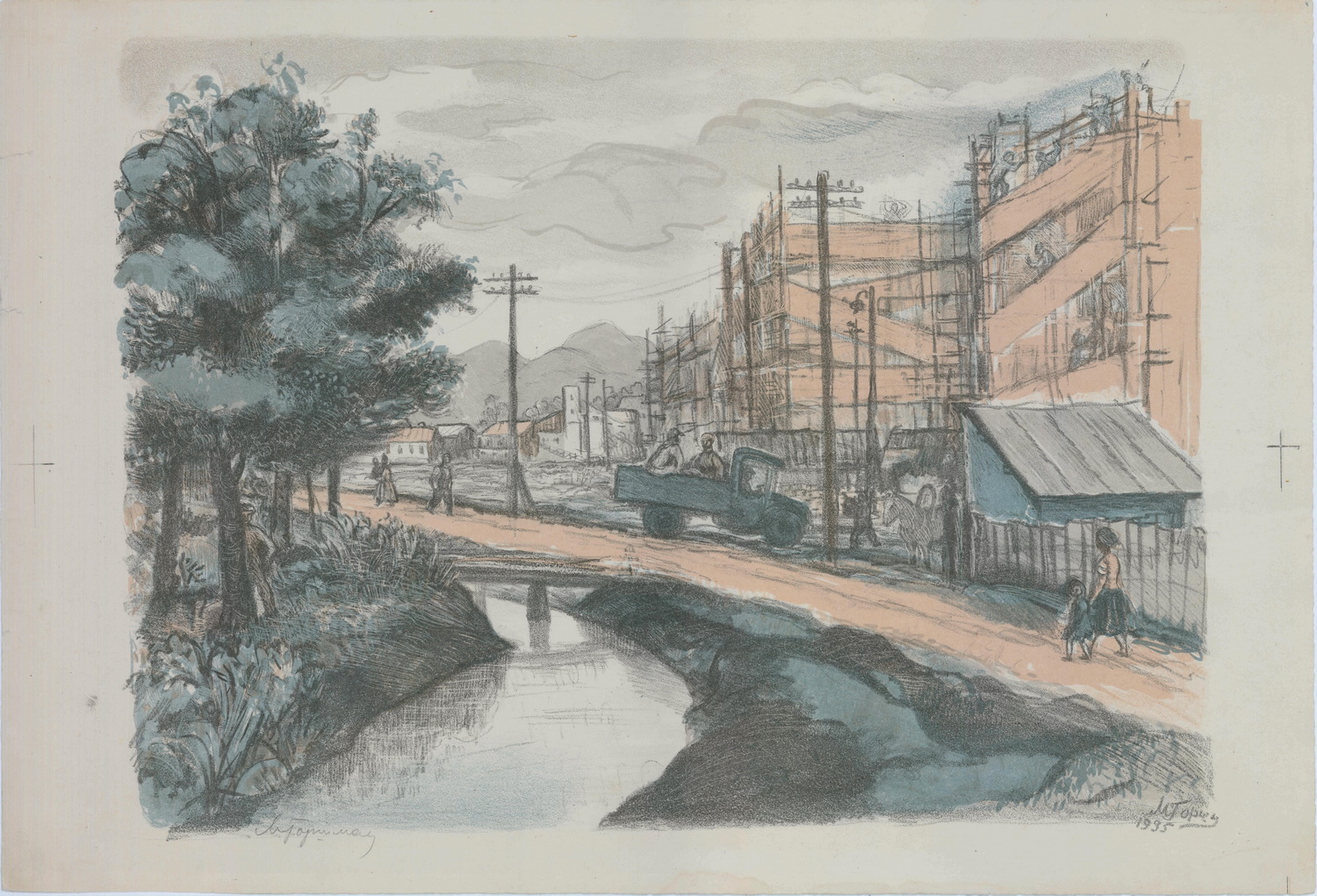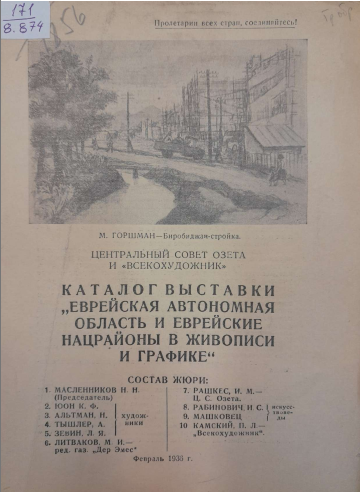


Jewish agricultural colonization in the USSR: continuation.
Mendel Gorshman. "Construction site in Birobidzhan". Lithograph. 1935.
Soon after the proclamation of the Jewish Autonomous Region in 1934, OZET (Society for Settling Toiling Jews on the Land) and VsekoKhudozhnik (National Cooperative Union of Fine Arts Workers) organized a creative mission to Birobidzhan. The goal was to present to the general public the achievements of the region, accomplished since the arrival of the first settlers in 1928. The creative team included Yevgeny Lvov, Roman Gershanik, Lev Zevin, Mikhail Shteiner and Mendel Gorshman, who were later joined by two more artists already resident in Birobidzhan: Yosif Zisman and Boris Rozenblit. Despite the fact that the Jewish population in the new region did not exceed 20%, Birobidzhan continued to serve as a symbol of Jewish nation-building in the state propaganda until the end of the thirties.
The artists on the mission sought to convey the “conquest of the taiga” through landscapes emphasizing the transition from rural, untouched nature to full-fledged cities and industrial centers. The collection of the Museum of Jewish History in Russia includes some of the drawings, engravings, and watercolors created by Mendel Gorshman during this trip. Color lithograph “Construction Site in Birobidzhan”, created in 1935, is particularly indicative of the artist’s take on the genre. A diagonal strip of land running along the river separates a section of virginal land on the left from the construction site that gives the work its name. Through this simple device, the composition emphasizes the contrast between old and new and, therefore, the transitional quality of Birobidzhan – a territory that is neither rural nor urban, but rather is still in the process of transformation. Electricity grids, trucks and multi-story buildings coexist here with dirt roads, modest houses and farm animals. The promise of a bright Jewish future is written on the landscape, but not yet fulfilled. “Construction site in Birobidzhan” was included in the exhibition “The Jewish Autonomous Region and Jewish National Districts in Painting and Drawing” (Moscow, 1936) – a project designed to summarize the achievements of Soviet national policy in resolving the “Jewish question”. Only two years after the exhibition, KOMZET (Committee for the Settlement of Toiling Jews on the Land) and OZET were liquidated, many of their leaders were shot or imprisoned, and resettlement to Birobidzhan ceased until the end of World War II. Under this gloomy light, the construction sites began to look more and more like ruins.
Cover of “The Jewish Autonomous Region and Jewish National Districts in Painting and Drawing” (1936) exhibition catalogue (Russian State Library)


